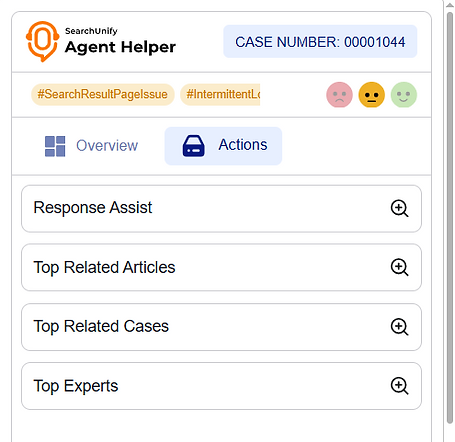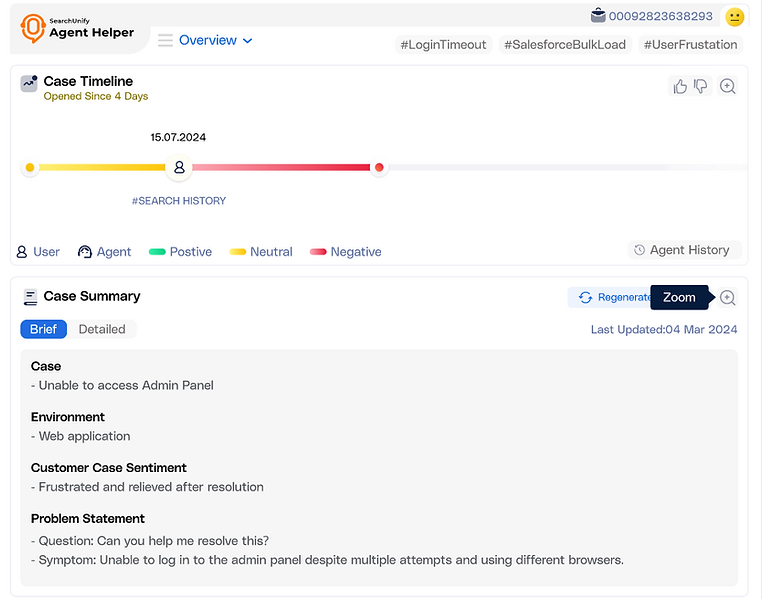Agent Helper Case Study
Reducing clicks, increasing adoption, and integrating seamlessly into agent workflows.
Overview
Agent Helper is an AI-powered support tool used by enterprise agents to resolve cases faster.
The initial compact design shipped to all customers as a default. While lightweight, it struggled with adoption:
-
Agents resisted using it, seeing it as “extra work.”
-
Core actions like escalation and summarization took too many clicks.
-
The product felt disconnected from their natural workflow.
My Role: Product Design Lead — owned research, UX/UI, collaborated closely with Product Management & Engineering.
Problem
-
Adoption < expected benchmarks despite rollout.
-
Too many clicks to access case details and actions.
-
Agent resistance: new tools had to prove their value quickly.

Approach
To uncover why adoption was low, I analyzed click-path data and ran agent feedback sessions.
Findings:
-
Agents wanted glanceable summaries (case + environment + sentiment) up front.
-
They expected quick actions (escalate, summarize, respond) within one step.
-
Technical limits prevented live auto-refresh, creating lag.
Collaboration
-
Product → Helped prioritize what fields to surface in the summary.
-
Engineering → Flagged API refresh issues; together we shifted to a pull-to-refresh with batch updates design.
-
CSM Team → Shared customer feedback around resistance, validating design direction.

Solution (Before → After)
Before (Initial Design):
-
Tabs with nested cards for Response Assist, Related Articles, Related Cases, Experts.
-
Agents had to click through multiple levels to get context.
-
Felt like an “add-on” rather than part of the flow.


After (Redesigned Layout):
-
Case Timeline → visual snapshot of events + sentiment markers.
-
Case Summary (Brief vs Detailed) → quick-glance essentials with deeper context on demand.
-
Response Assist Inline Editor → AI-drafted responses with tone adjustment + 1-click copy.
-
Related Articles, Cases, Experts → integrated in a clean expandable format.

Outcome
-
–30% clicks for common actions (escalation, summarization).
-
+28% increase in Response Assist usage as a first-draft reply tool.
-
Agents reported it “felt part of the workflow” instead of an extra step.
-
PMs validated improved adoption → redesign became the default for all customers.

Learning
Adoption isn’t about more features — it’s about reducing resistance. This redesign worked because we focused on ease-of-use, collaborated with engineering to meet constraints, and integrated into agents’ real flow.



